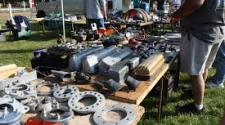A Comeback really taking shape is the first in an arrangement of yearly reports from The Boston Consulting Group on quality creation in the auto business. The report investigates the business’ two biggest parts, unique gear makers (Oems) and creators of auto segments that are sold either to Oems or to end clients in the reseller’s exchange.
These two organizations are altogether different, with unique progress, budgetary attributes, normal development rates, capital prerequisites, and net revenues. By and by, the segments are inseparably connected and regularly have in like manner the same difficulties; a pressing one for both areas has been discovering their balance in a worldwide economy that was shaken to its establishment in 2008.
Our investigation of aggregate shareholder return (TSR) in the course of the last three, five, and ten years recommends that the since a long time ago anticipated recuperation for both Oems and part producers is at last beginning to increase footing crosswise over nations and areas and in all subsectors.
Truth be told, few financial segments have mounted a more amazing rebound from the assaults of the money related emergency than those in the car business. Both Oems and segment creators conveyed five-year average yearly returns that were well in abundance of the average return for the 26 businesses followed by BCG.
Oems delivered an average yearly TSR of 29 percent from 2009 through 2013, while part creators posted an average yearly TSR of 33 percent. The average yearly return for all businesses was 21 percent. The car business’ late execution speaks to a striking recuperation from the profundities of the 2008 money related emergency, when the enormous three U.s. automakers alone posted almost $75 billion in misfortunes and unit deals plunged around the world.
Then again, a few organizations are recouping more rapidly than others. Auto Oems recorded the third-most astounding standard deviation in TSR of the 26 businesses BCG tracks. The top worth maker, Great Wall Motor Company, posted an average yearly TSR of 109 percent over the five-year period, while the most exceedingly bad entertainers wrecked 5 percent of quality yearly a swing of 114 rate focuses.
Oems that focused on developing markets delivered an average yearly TSR that went from 36 to 49 percent; automakers that concentrated universally on created markets posted lower average yearly returns, extending from 23 to 35 percent. The nation or local center of makers additionally affected how they made worth.
Oems that focused on developing markets made esteem essentially through a mix of edge change and deals development. Very nearly 39 percent of their TSR was attributable to more extensive edges; income increments represented an extra 52 percent. Oems that had a worldwide center made esteem in huge part by stretching their net revenues and returning trade to shareholders in for cold hard currency the type of profits and offer repurchases.
Makers’ execution, highlighted by development of 47 percent in joined unit deals for the five biggest offering Oems amid the previous ten years, underscores the crucial imperativeness of worldwide scale: it helps Oems stay aggressive on expenses and positions them to catch experience high-development markets and along these lines harden their playing point.
Going ahead, Oems should likewise make item development a need, while concentrating on the improvement of vehicles suited to the novel necessities of individual markets. Some industry players still need to embrace a wide rebuilding of their worth suggestions, item portfolios, funds, and administration to goad the development moving advancement required to serve a worldwide commercial center in consistent flux.
The execution of segment producers was to some degree subordinate upon area, with those in China creating a five-year average yearly TSR of 29 percent and those in whatever is left of the world outside the created markets of Europe, Japan, and North America posting 49 percent. The five-year average yearly TSR for European segment creators was 38 percent, while their North American partners conveyed 39 percent.
Japanese and South Korean part producers posted an average yearly TSR of 29 percent in the latest five-year period, in accordance with organizations in China. The toll taken by the 2011 Fukushima Daiichi atomic debacle and the powerless yen was clear.
The drivers of TSR differed generally crosswise over nations and districts. Segment producers that concentrated on the developed markets of Europe and North America created returns to a great extent through enhanced valuation products and money installments to shareholders.
Parts producers that focused on Japan administered the main part of their quality creation endeavors to returning money to shareholders and enhancing edges. What’s more segment creators that concentrated on creating markets depended on income development and, to a lesser degree, money conveyances to shareholders.
Force train suppliers were the top-performing part subsector: their incomes and returns were supported by new laws and regulations went for enhancing fuel proficiency and diminishing vehicle weight, and also developing customer interest for “greener” vehicles.
Part producers that determined a high rate of their deals from the reseller’s exchange channel were versatile amid the latest three-, five-, and ten-year periods. These organizations profited from give or take 14 percent development in the quantity of light traveler vehicles in operation comprehensively and about a 18 percent climb in the normal period of vehicles out and about. As vehicles age, parts destroy and need to be supplanted, creating a positive effect on post-retail request.
The development plan for both Oems and segment producers depends on their capacity to accomplish or grow worldwide scale, build a practical vicinity on the planet’s auto markets, and keep on supporting advancement.
Both Oems and segment creators ought not depend on a climbing tide to lift all vessels. These divisions have been among the greatest beneficiaries of the rise in worldwide capital markets from 2012 through 2013, however they shouldn’t rely on upon stretching business products to keep driving shareholder returns. The general atmosphere may be enhancing, yet particular moves by individual organizations will focus the victors and failures later on.
















